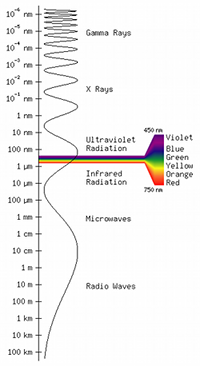
Some people find it difficult to create colors with RGB values. This article tries to help your intuition take off.
| Color | Frequency | Wavelength |
|---|---|---|
| violet | 668–789 THz | 380–450 nm |
| blue | 631–668 THz | 450–475 nm |
| cyan | 606–630 THz | 476–495 nm |
| green | 526–606 THz | 495–570 nm |
| yellow | 508–526 THz | 570–590 nm |
| orange | 484–508 THz | 590–620 nm |
| red | 400–484 THz | 620–750 nm |
Writing some fill text here for getting the UL list a bit down without adding bogus elements to that list. Well, I guess this should do.
Apparently this was not enough fill text to make everything move down as far as I was hoping.
There are two types of color mixing: Additive and Subtractive. In both cases there are three primary colors, three secondary colors (colors made from 2 of the three primary colors in equal amounts), and one tertiary color made from all three primary colors.